Gold prices steady ahead of Fed decision, Trump’s tariff deadline
Introduction & Market Context
HealthStream Inc. (NASDAQ:HSTM), a provider of workforce solutions for the healthcare industry, recently presented its Q1 2025 investor presentation, highlighting its position in the $4.9 trillion healthcare sector that represents 17.6% of U.S. GDP. Despite the optimistic tone of the presentation, the company’s actual performance revealed challenges, with its stock dropping 15.55% following an earnings miss.
The company positions itself as a market leader in workforce solutions for healthcare organizations, focusing on learning, credentialing, and scheduling with enterprise-level, subscription-based products. HealthStream serves a vast addressable market of 12.6 million individuals in healthcare delivery, including nursing students, acute care employees, and continuum of care employees.
As shown in the following overview of HealthStream’s market position and financial status:
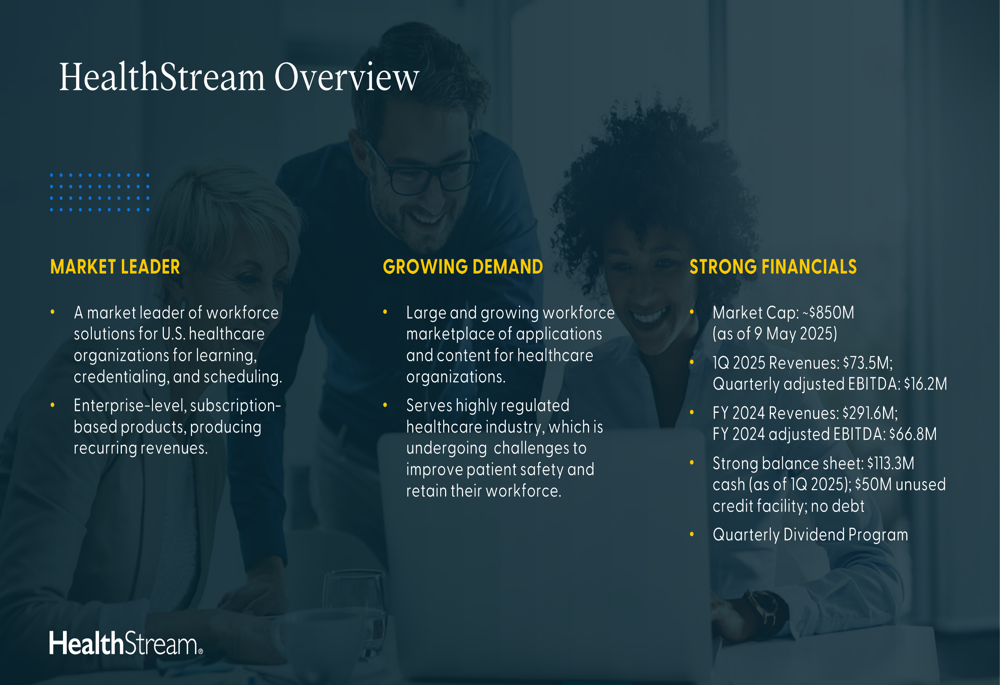
Q1 2025 Financial Performance
HealthStream reported Q1 2025 revenue of $73.5 million, representing a minimal 1% year-over-year increase from $72.8 million in Q1 2024. This fell short of analyst expectations of $74.89 million. The company’s earnings per share came in at $0.14, missing the forecast of $0.15.
More concerning was the decline in profitability metrics, with operating income falling 23.1% year-over-year and net income dropping 17.1%. Adjusted EBITDA for Q1 2025 was $16.2 million, down 5% from $17.1 million in the same period last year.
The following chart illustrates HealthStream’s revenue growth trajectory from 2011 through Q1 2025:

Despite these challenges, HealthStream maintains a strong balance sheet with $113.3 million in cash, a $50 million unused credit facility, and no debt. The company’s gross margin stands at 65.3%, as shown in the following chart:

Adjusted EBITDA has shown steady growth over the years, though the most recent quarter shows a slight decline:
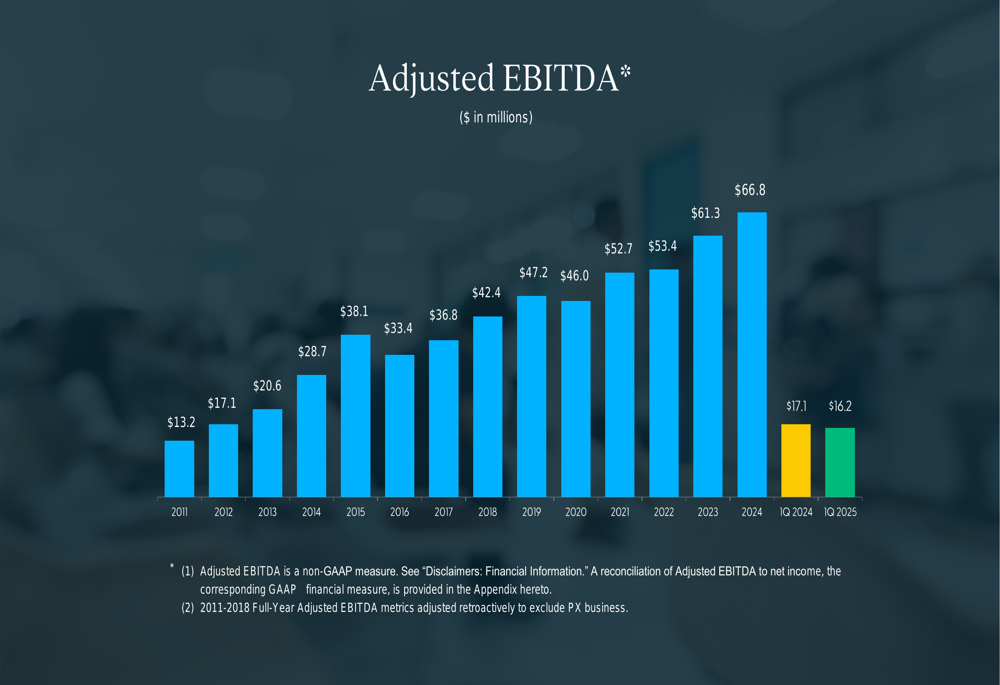
Product Portfolio and Market Position
HealthStream’s business is built around three primary application suites: Learning, Credentialing, and Scheduling. These solutions help healthcare organizations develop their clinical workforce, meet compliance requirements, manage credentialing and privileging, and optimize workforce scheduling.
As illustrated in this overview of the company’s application suites:
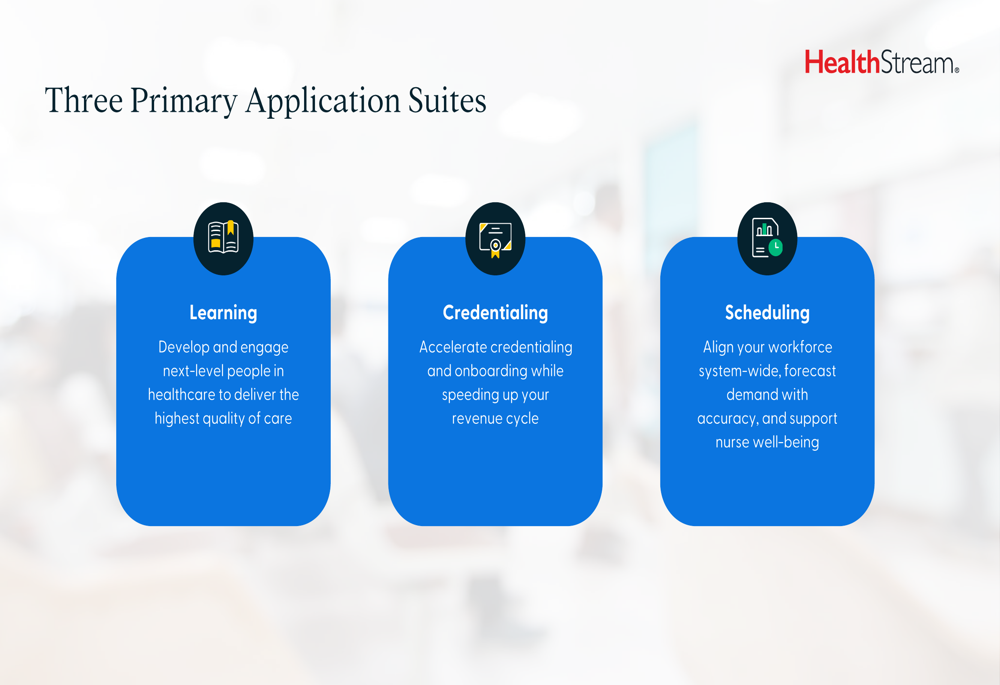
The company’s product portfolio includes several notable offerings. The HealthStream Learning Center has been ranked #1 in Best Healthcare Software (ETR:SOWGn) by G2, while CredentialStream has been ranked #5 on G2’s 2025 list of Top Healthcare Software Products.
One of HealthStream’s most successful products is Nursegrid, described as the "#1 Most Adopted App for Nurses" with 635,000+ monthly active users. The company claims that one in six U.S. nurses actively use NurseGrid, and the app maintains an impressive 4.9/5 rating with 130,000 reviews on the Apple (NASDAQ:AAPL) App Store.
As shown in this overview of the Nursegrid application:
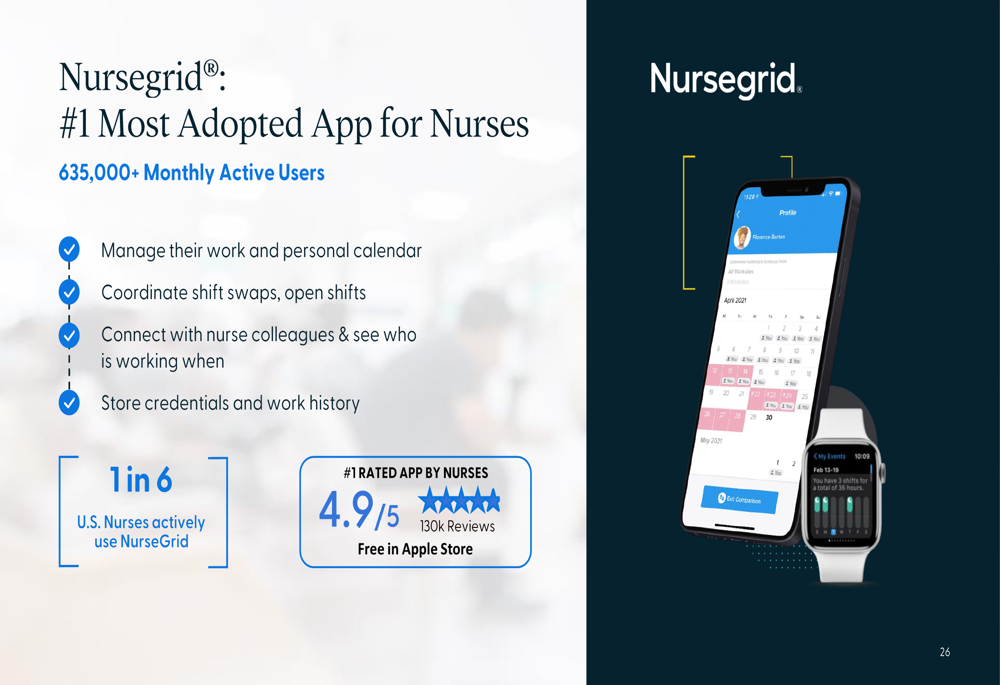
The company is also investing in AI-driven solutions, as demonstrated by its new Learning Experience application:
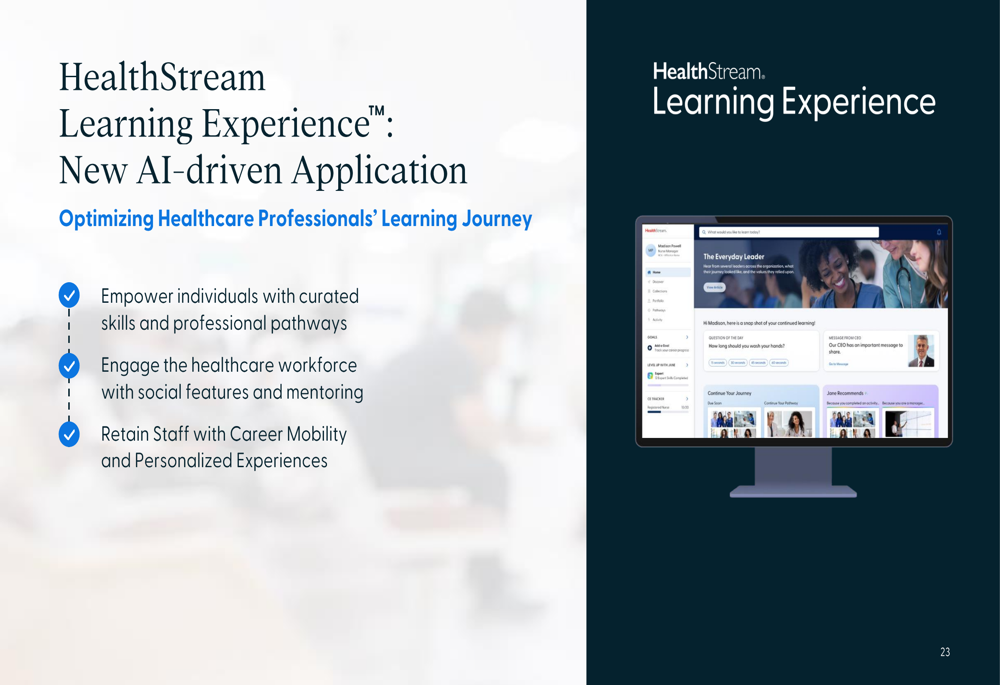
Growth Strategy and Medium-Term Objectives
HealthStream has outlined medium-term (approximately 3-year) objectives that include organic revenue growth of 5-7%, gross margins of 65-68%, and adjusted EBITDA margins of 21-24%. However, current performance falls short on the revenue growth target, with Q1 2025 showing just 0.08% organic growth, though the company is meeting its margin targets.
The following chart compares HealthStream’s medium-term objectives against current performance:
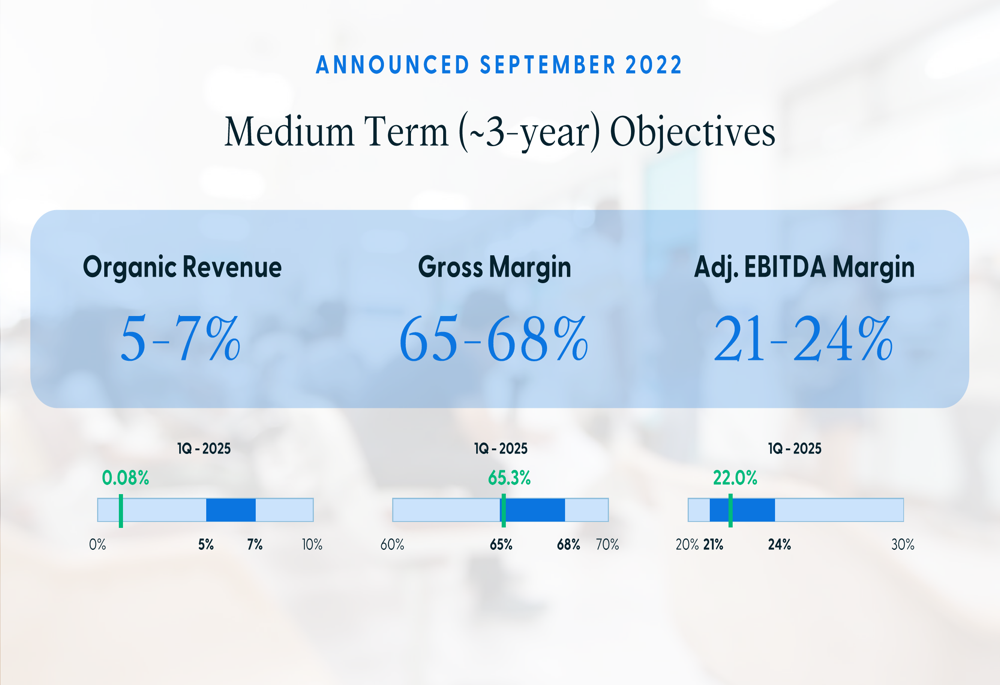
A key part of HealthStream’s growth strategy involves expanding its total addressable market. The company recently announced its entry into the nursing student market, targeting 1,000+ nursing schools and over 1 million nursing students. This expansion leverages the myClinicalExchange application with an average revenue of approximately $30 per user per year.
The company’s total addressable market is broken down as follows:

HealthStream has demonstrated success in growing revenue per employee with existing customers. Case studies presented show a Tennessee health system increasing from $6.25 annual revenue per employee in 2004 to $92.86 in 2025, and a California health system growing from $6.50 in 2006 to $55.16 in 2025, both through cross-selling additional solutions.
Forward-Looking Statements and Challenges
Despite the optimistic presentation, HealthStream faces significant challenges. The company has revised its 2025 revenue guidance to a range of $297.5 million to $303.5 million, with net income projected between $18.6 million and $21 million and adjusted EBITDA between $68.5 million and $72.5 million.
During the earnings call, CEO Robert A. Frist, Jr. emphasized the company’s resilience, stating, "Times like this warrant companies with strong balance sheets that build strong products and navigate the challenges they face directly." However, the company is dealing with implementation delays and scaling issues with CredentialStream, as well as healthcare market funding cuts impacting customer purchasing behavior.
In a positive development for shareholders, HealthStream announced a 12% increase in its quarterly cash dividend to $0.028 per share, up from the previous quarter’s $0.025 per share. This marks the second quarterly dividend increase since launching the program, suggesting management’s confidence in the company’s financial stability despite current headwinds.
As the healthcare industry continues to face workforce challenges, HealthStream’s focus on training, credentialing, and scheduling solutions positions it to address critical needs. However, investors will be watching closely to see if the company can accelerate its organic revenue growth to meet its medium-term objectives while maintaining profitability in a challenging healthcare market environment.
Full presentation:
This article was generated with the support of AI and reviewed by an editor. For more information see our T&C.
